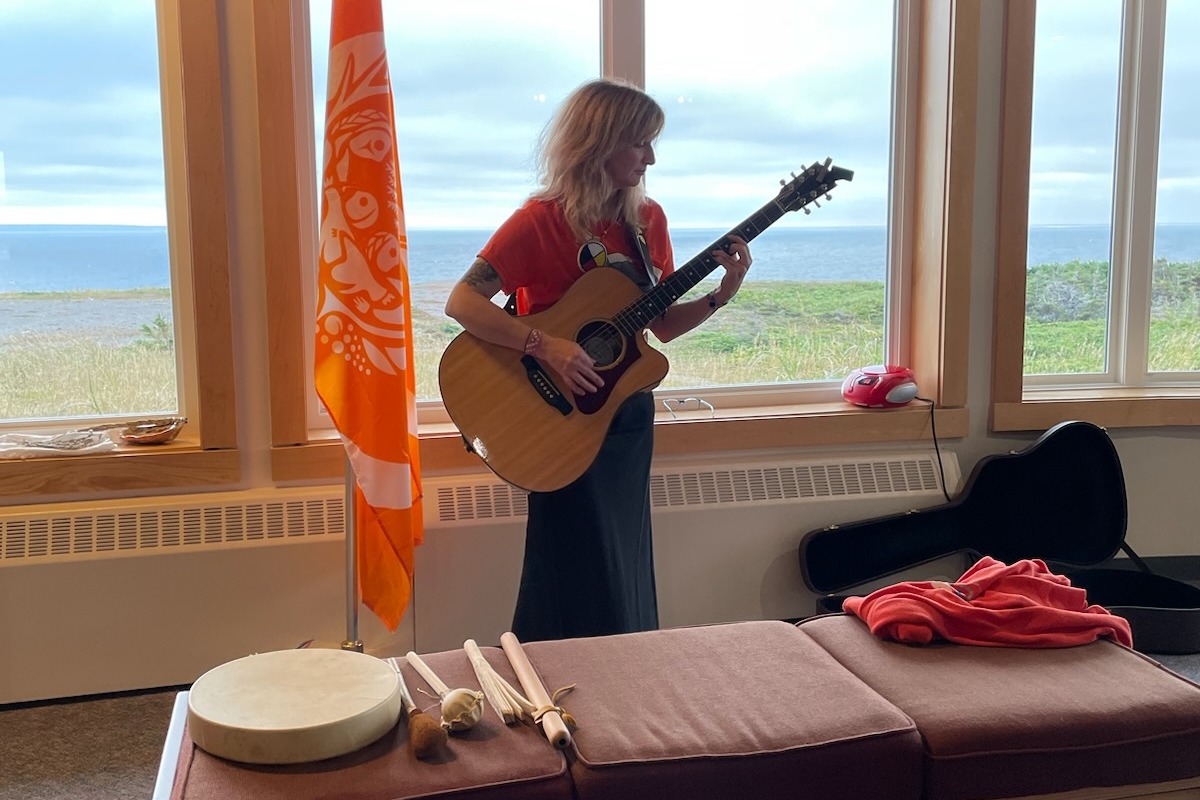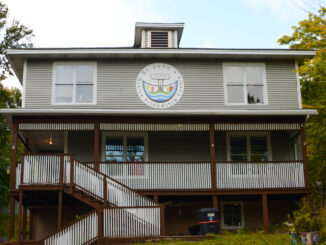From forbidden to cherished, contemporary First Nations songs are now listened to and enjoyed by many.

Lauren Ella Burke
Kicker
Instruments such as traditional hand drums and rattles were once stripped from First Nations people and banned from use. They were not allowed to practice their ceremonies which included scared songs and dances. Today, Mi’kmaq musicians Paul Pike and Lorna Lovell create music to be shared with everyone.
Pike is a Mi’kmaw musician from the west coast of Newfoundland and has been playing music his whole life. He has also created music under the name Medicine Dream. He plays the native American flute, guitar, drum kit, traditional hand drum, keyboard, bass, and he is also a vocalist. He combines these instruments to compose a unique style of music. The music he creates, he said, is not for anyone in particular, but is enjoyed by both Indigenous and non-Indigenous people.
“There are people (who listen) that are not from our culture,” said Pike. “To feed the message through a contemporary form, it’s a way of making it more digestible for them. So, they can hear it and they can understand and relate to it.”
Music has always been a creative outlet and a way to tell his story, said Pike. By creating a contemporary sound using traditional instruments he can appeal to a larger audience and teach about Indigenous culture in Newfoundland. He writes music about who he is, what he feels is important, and what needs to be shared.
“(I) was trying to bridge between the rock music that I grew up with and the cultural music that inspired me to be who I am,” he said.
The native America flute has roots in Newfoundland Mi’kmaq culture, says Pike. He discovered it through stories that were passed down.
“By sharing that instrument it’s bringing awareness,” he said.
Through his music he also tries to lift people up who have for many years been put down for their culture, and to let people see their value.
“Basically, they’re two foreign elements,” Pike said, “you got rock music, and you got powwow music that I like bringing together and making them work in harmony.
“That orchestration is a challenge, but it’s part of what makes my sound a little bit unique.”

Lovell is another west-coast based Newfoundland Mi’kmaw singer and songwriter who also brings attention to Indigenous history and current issues through her music. She said by singing about these topics in a contemporary style, she can reach a different audience.
“It’s no good for us to talk amongst ourselves, it’s the non-Indigenous people that we need to reach to teach them our stories,” said Lovell. “To teach them what has happened and why things are they way they are today.”
There are several messages she tries to convey through her country and folk style music. In her song titled No Country for Women, she sings about how it is not safe for women to go out alone. The piece brings awareness to missing and murdered Indigenous women, girls and the two-spirited. The song titled Come Home was written for the children who were taken away from their families and sent to residential schools.
As a teenager, Lovell learned about her indigenous background. She said her father told her about their ancestry on his mother’s side. They were not allowed to talk about it when growing up. It was kept hidden to avoid the prejudice so many Indigenous face.
She also likes to talk about her life in her music and get across positive and uplifting messages. In one of her songs, she sings about the camping trips she took with her family. She said while parts of her family’s Mi’kmaq culture was lost in the past, she was taught values such as respecting the land and everything on it.
“We spent time outside,” she said, “We learned to live off the land, we ate what we caught or grew.
“It’s important to me to bring that Indigenous way of life into my songs.”



Be the first to comment